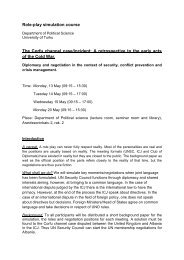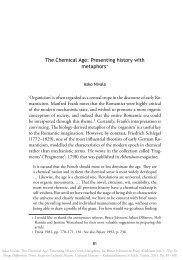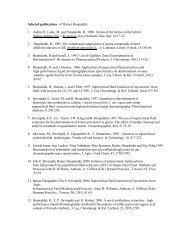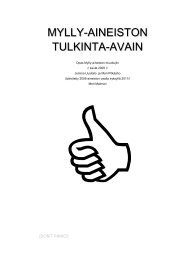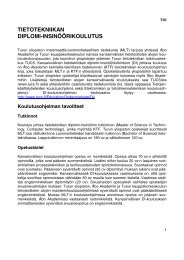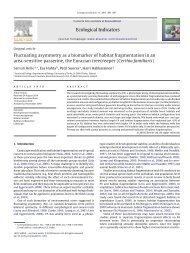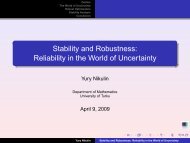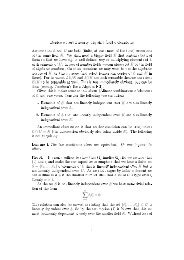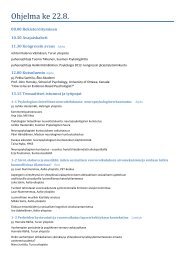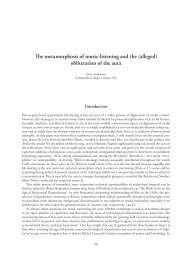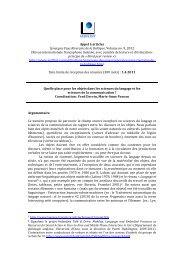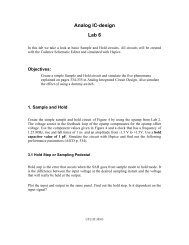MIRHAMI 2030 “Future Images of Food Consumption", Phase
MIRHAMI 2030 “Future Images of Food Consumption", Phase
MIRHAMI 2030 “Future Images of Food Consumption", Phase
You also want an ePaper? Increase the reach of your titles
YUMPU automatically turns print PDFs into web optimized ePapers that Google loves.
SECTION I: INTRODUCTION 11<br />
Mirhami <strong>2030</strong><br />
An initial long list <strong>of</strong> prospective interview candidates was submitted to FFRC on September<br />
19, 2006. The final list <strong>of</strong> those contacted and interviewed numbers 31.<br />
The prospective candidates were obtained through secondary research. The Primary (oneonone)<br />
discussion). As <strong>of</strong> January 22, 2007; 9 were interviewed and the list was expanded to 32<br />
contacts. All 32 were contacted, some refused to interview, others would not respond, two<br />
requested confidentiality, and finally, 11 agreed to interview. Of those who agreed, two could<br />
not subsequently be reached after several attempts. The final result is 9 interviews.<br />
The second component <strong>of</strong> the assignment in 2006 was a literature search. We were to secure<br />
and deposit relevant literature in our database and use Web CT as the platform. However, the<br />
Finpro project manager in 2006 was concerned about issues <strong>of</strong> privacy and we did not more<br />
forward. Thus an appendix to documentation was attached to the final report.<br />
The complete interview list and summaries are provided in the final report revised and<br />
completed on January 30, 2007. The work was conducted by Sharon Végh and covered the<br />
geographic scope <strong>of</strong> Canada and the United States <strong>of</strong> America (USA),<br />
1.2.2 The methodology used in Russia<br />
Observations were made to identify the consumer’s habits in nutrition, behavior <strong>of</strong> customers<br />
and the changes induced by different recent events, including possible ones in future.<br />
The main sources are:<br />
§ Information from different media, including newspapers, magazines and TV shows<br />
§ Topics covered at the industry events, such as <strong>Food</strong> exhibitions, seminars, etc.<br />
§ Observation <strong>of</strong> people behavior and different phenomena reflections in “common<br />
sense” understanding <strong>of</strong> the tendencies.<br />
Studies made by companies to make some forecasts <strong>of</strong> the <strong>Food</strong> market behavior and<br />
development in next years.<br />
The “Driving Forces in an Economy <strong>of</strong> Transition” was the main focus <strong>of</strong> the Russia report.<br />
This was discussed and agreed to by FFRC as Russia was in a different economic position as<br />
compared to the other countries studied. Interviews were not conducted with experts as the<br />
“food value chain” is at the initial stages <strong>of</strong> fast growth.<br />
During last 15 years Russia passes through a great changes in it’s political, economical and<br />
cultural life initiated by transition from old Soviet type economy to the modern economy based<br />
on the fundamental changes in all aspects <strong>of</strong> the life. The most significant fact is the great<br />
decrease <strong>of</strong> the manufacturing started in 1991 and lasted till 2000, when the growth started.<br />
At this moment Russia in general approaches the starting level <strong>of</strong> economic reforms in terms <strong>of</strong><br />
general production volume. Such a great decrease in the first period <strong>of</strong> economic reforms<br />
found it’s reflection in the consumption <strong>of</strong> food products in general. The consumption was<br />
shifted to the most inexpensive and available products, such as bread, potatoes, different grain<br />
products, etc.<br />
“Kacchalov and partners”, the company who studies the relations between income and food<br />
products expenses and it’s development in time provided data on income development.<br />
© Finpro & Finland Futures Research Centre




